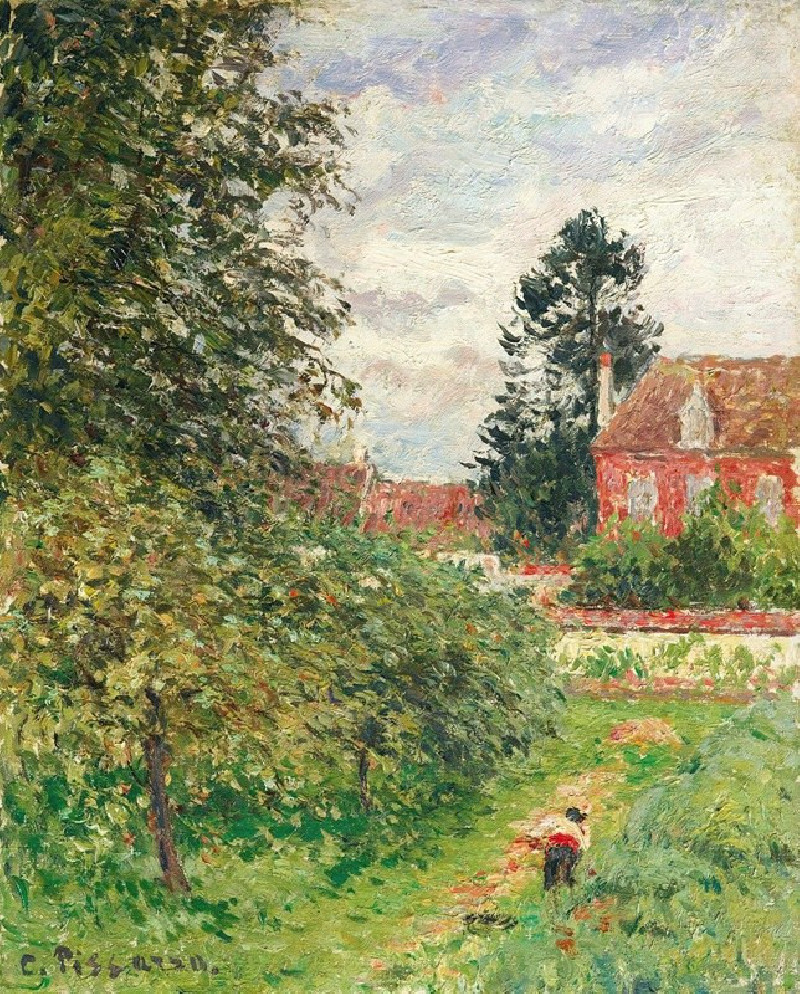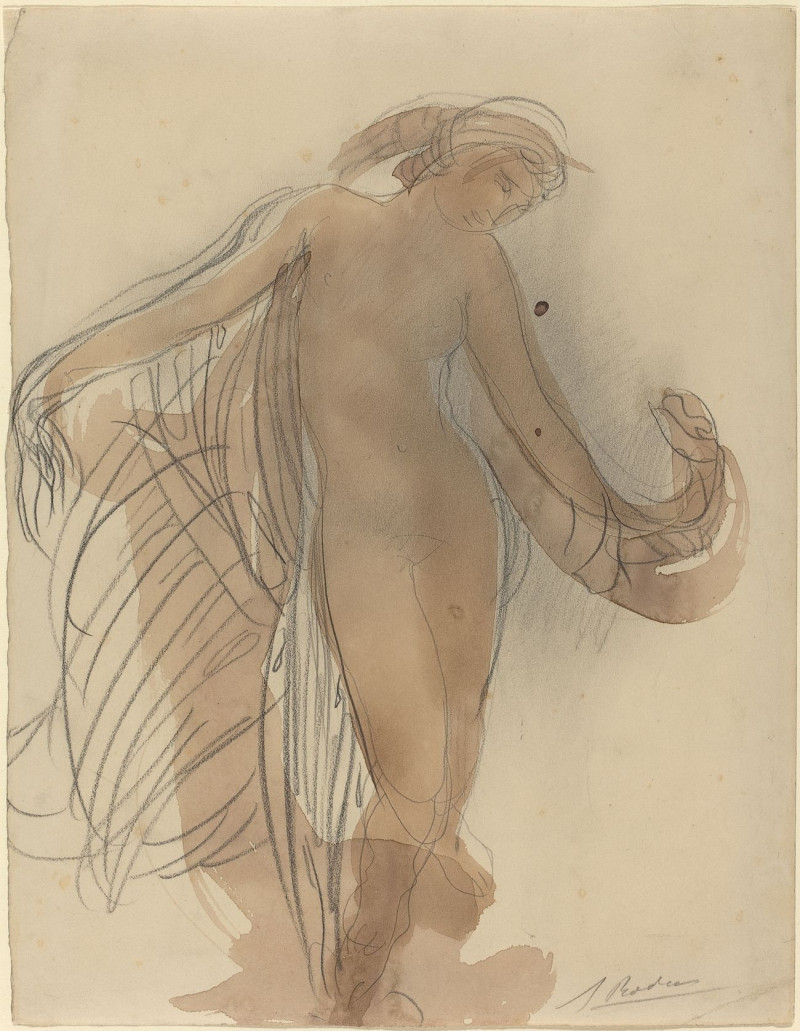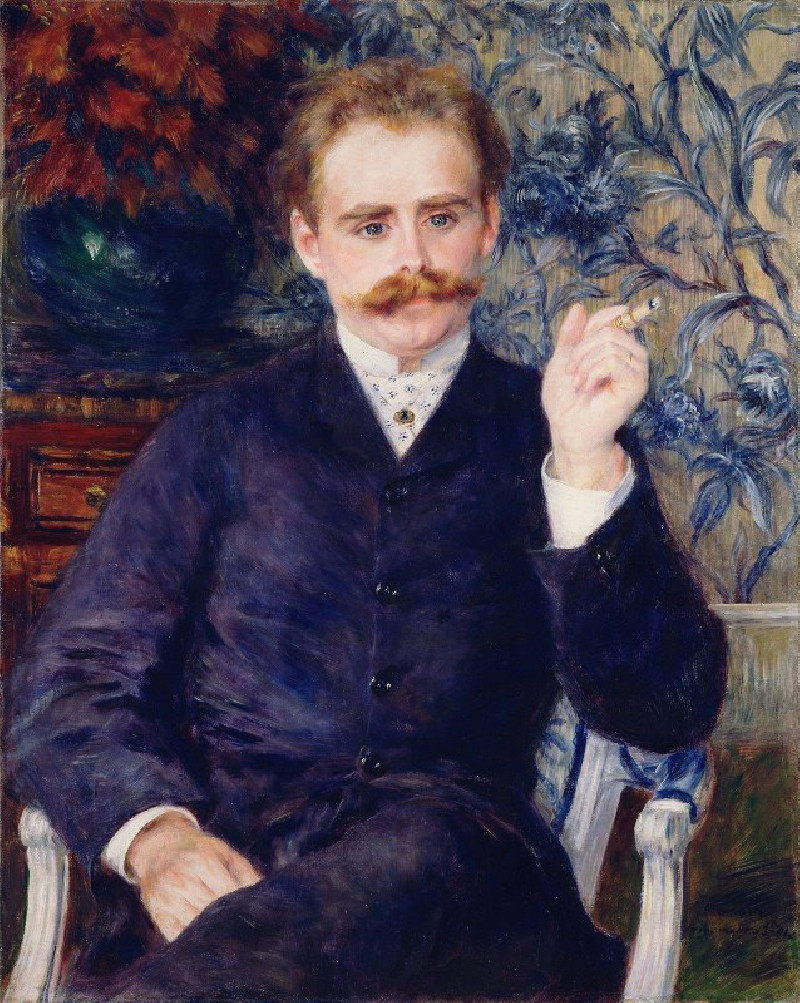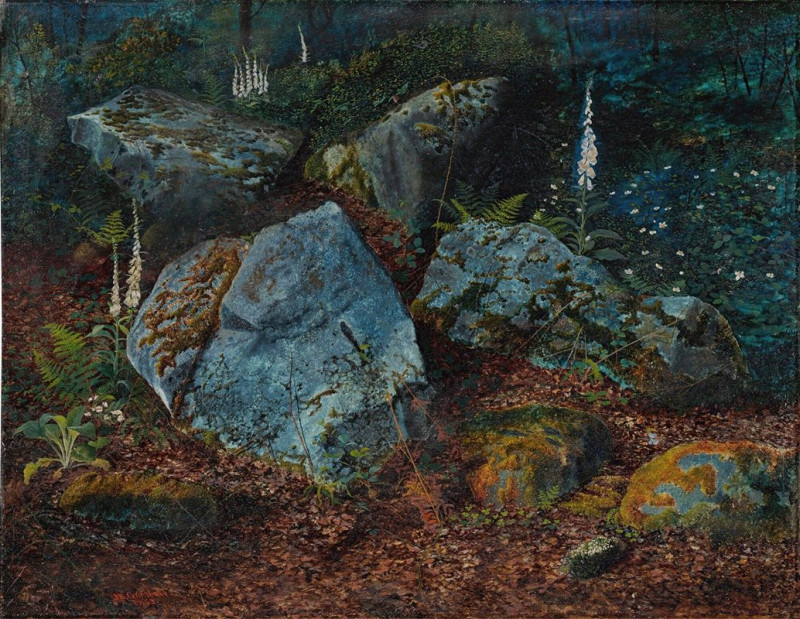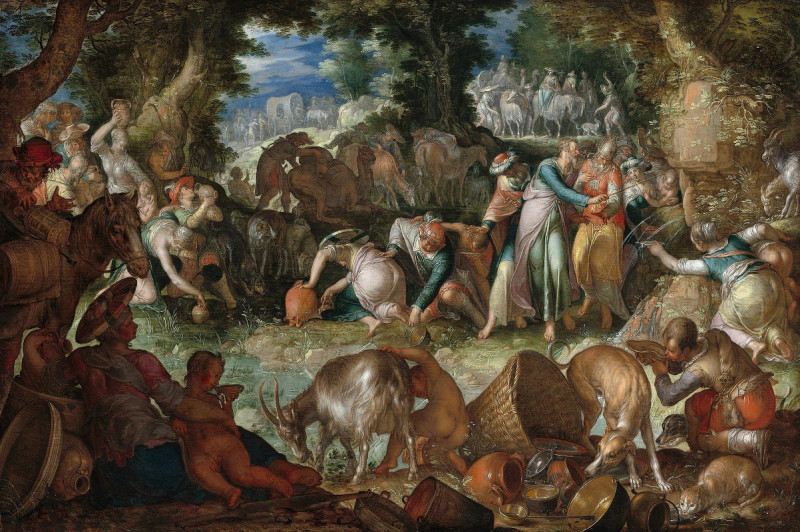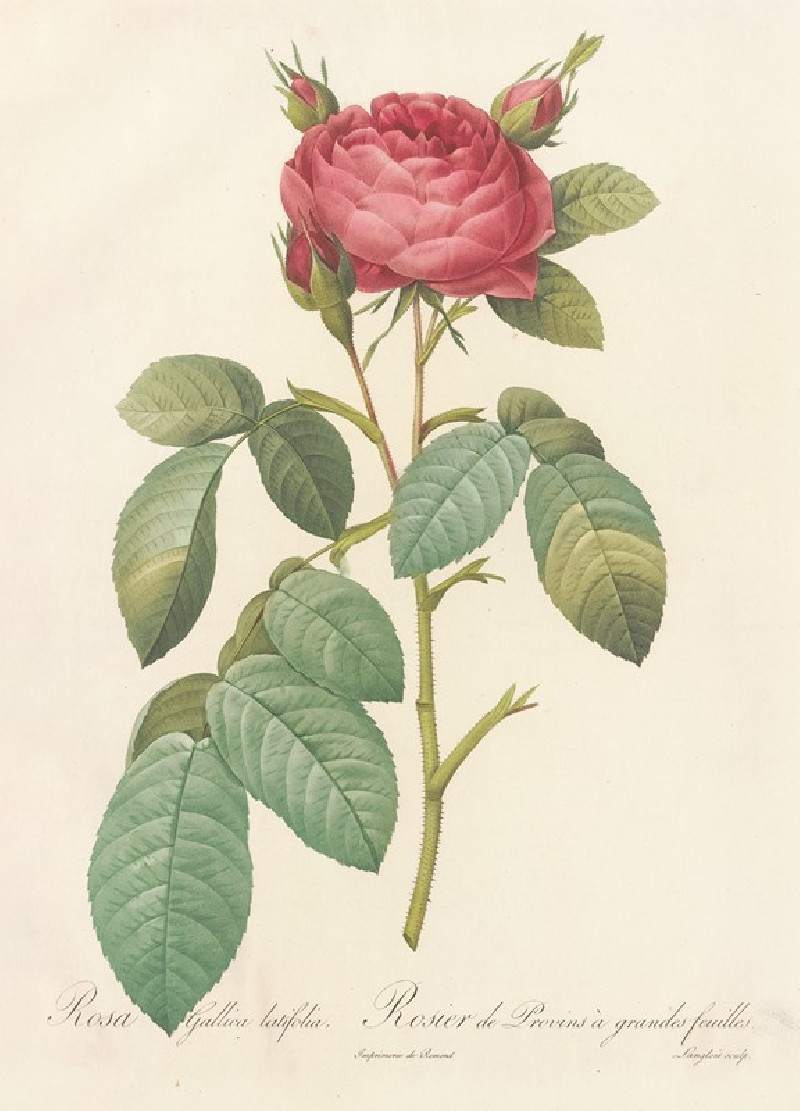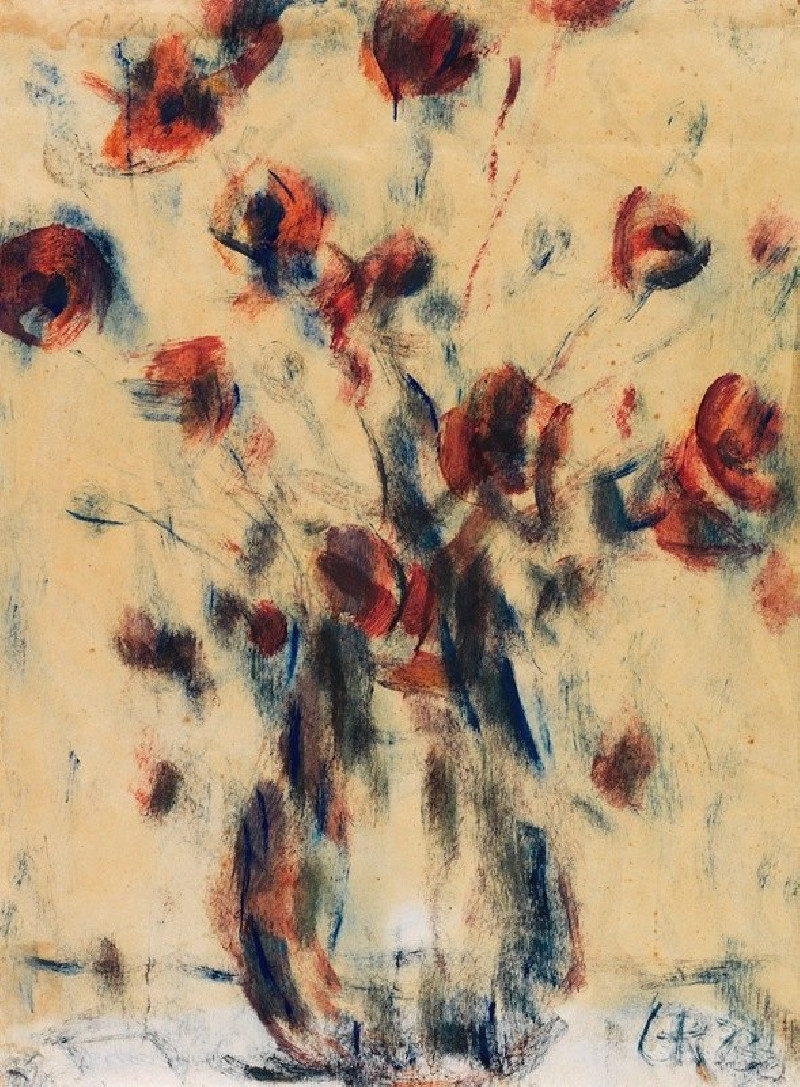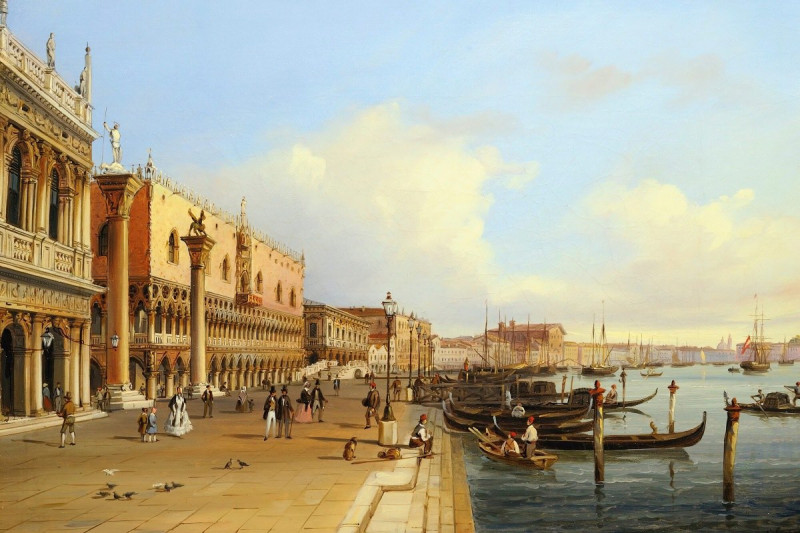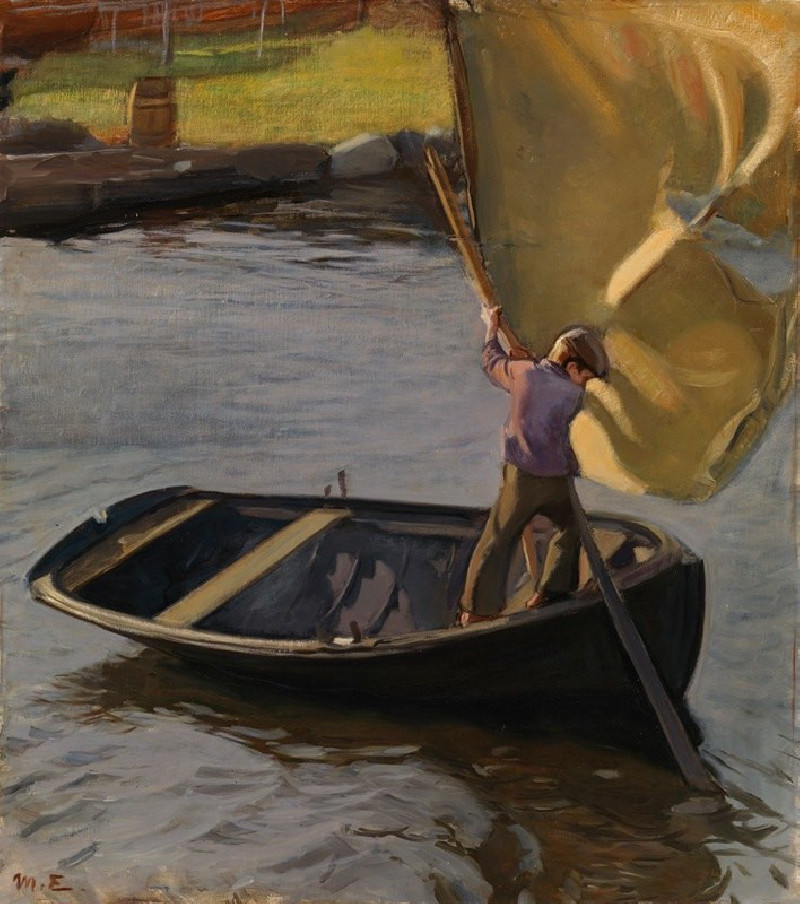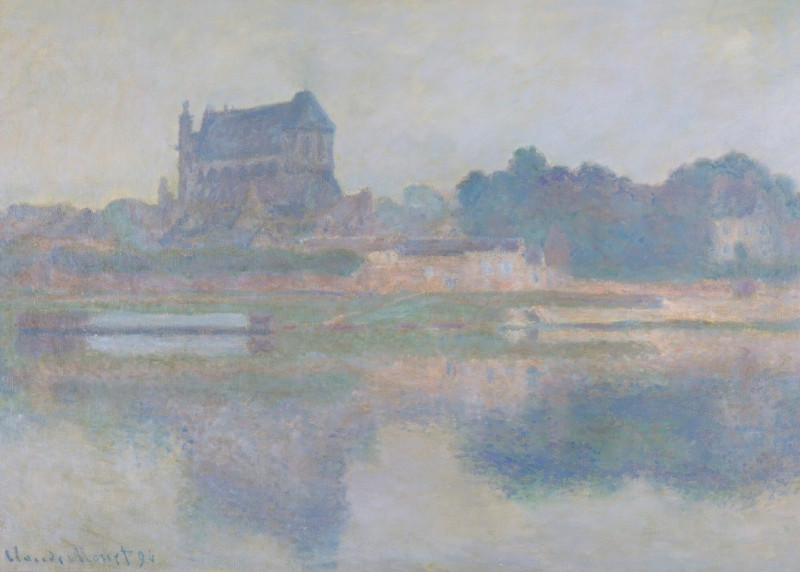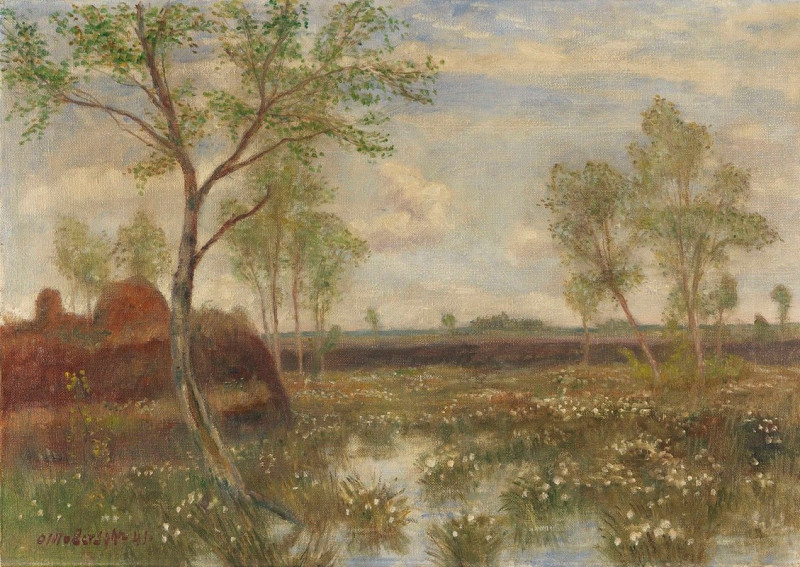La Maison Des Anglais, Éragny (circa 1902)
Technique: Giclée quality print
Recommended by our customers
More about this artwork
Discover the serene beauty of Camille Pissarro's "La Maison Des Anglais, Éragny" (circa 1902), a painting that captures the essence of early 20th-century rural France. Rendered with the masterful touch of Impressionism for which Pissarro is renowned, this artwork showcases a lush countryside scene filled with vibrant colors and dynamic brushstrokes.The painting depicts a garden pathway leading towards a traditional red-roofed house peeking through an abundance of green foliage. Foregrounded by a rich tapestry of trees and shrubs, the scene invites the viewer into a tranquil space. Strokes of red, white, and green suggest blooming flowers and thriving vegetation that convey the vitality of the rural landscape. Toward the left part of the canvas, semi-obscured by the foliage, a figure bends, engaged in garden work—emphasizing the harmony between human and nature.Pissarro’s choice of subdued yet varied palette along with his loose brushwork creates a sense of movement and natural rhythm. The sky, a whirl of blues and whites, mirrors the dynamic atmosphere typical of Éragny, where Pissarro’s works often explored the interplay between man-made and natural environments."La Maison Des Anglais, Éragny" not only reflects Pissarro's acute awareness of his surroundings but also exudes a timeless appeal, inviting observers to step back to a simpler time of pastoral splendor.
Delivery
Returns
Blessed are they who see beautiful things in humble places where other people see nothing. — Camille Pissarro
Camille Pissarro (1830-1903) was born on St.Thomas (now the US Virgin Islands) to a Portuguese father and a Dominican mother. He went to Paris to study art at Ecole des Beaux-Arts. He was an early pioneer of pointillism and neo-impressionism and later became a mentor of many famous impressionist painters including Cezanne, Manet, Renoir, and Gauguin. His paintings depicted rural and urban French landscapes and lifestyle. Many of his works politically captured images of peasants and laborers. Today, he is considered the father of impressionism.

